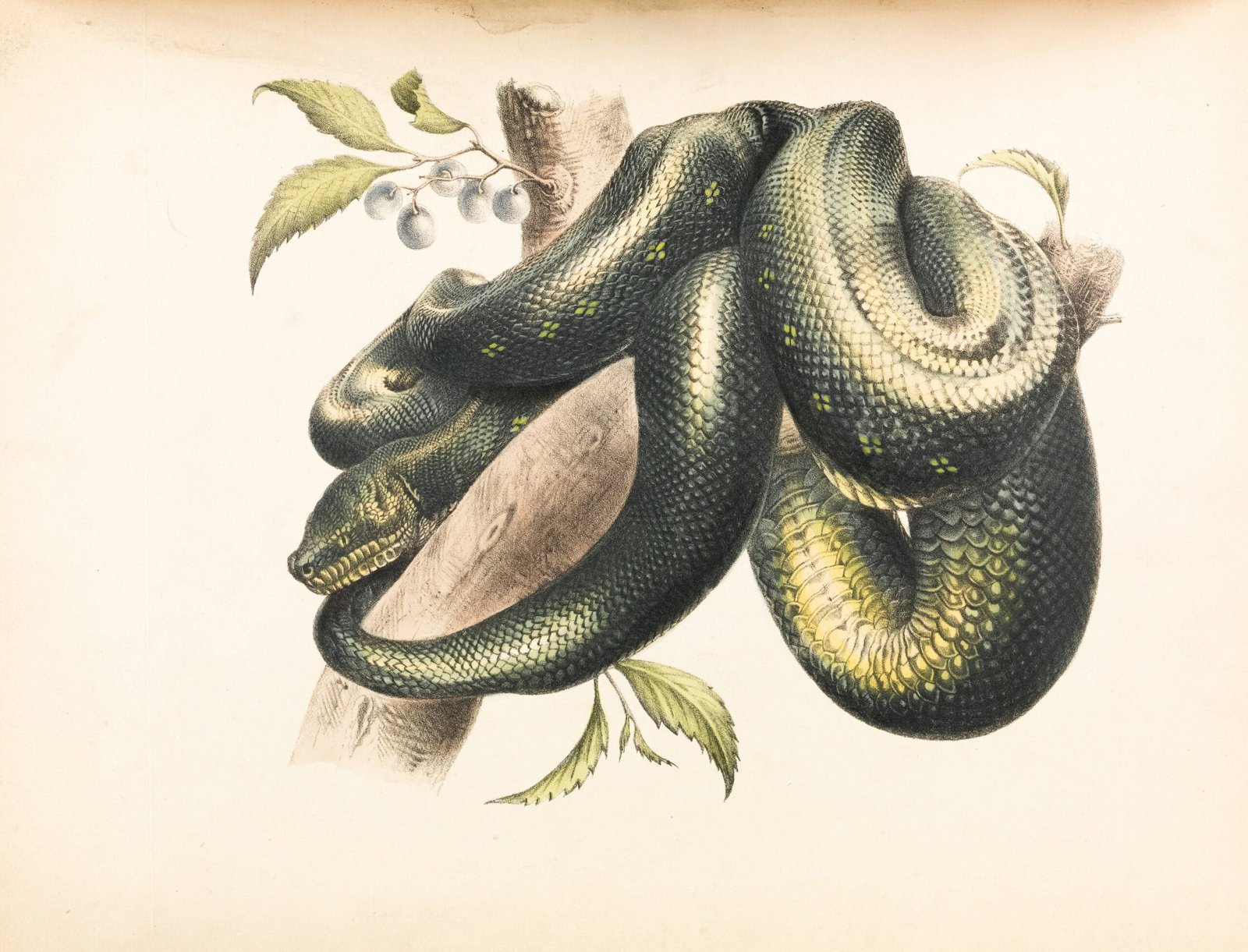The Snake in Religion, Witchcraft, and Spirituality
The snake has held significant symbolic meaning across various religions, spiritual paths, and cultures throughout history. Its rich and diverse interpretations range from representing evil and temptation to embodying wisdom, transformation, and life force energy. Below is an exploration of the snake’s role in different belief systems, including witchcraft and pagan traditions, as well as its spiritual significance.
The Role of Snakes in Major Religions and Belief Systems
Christianity
In Christian theology, the snake is often associated with Satan, primarily due to the story of the Garden of Eden in the Book of Genesis. In this narrative, a serpent tempts Eve to eat the forbidden fruit, leading to the fall of humanity. This tale has cemented the snake as a symbol of sin, deceit, and temptation. The association with evil continues in Christian iconography, where the serpent is a symbol of spiritual corruption.
Hinduism
In Hinduism, the snake has a dual nature. It can symbolize danger and destruction, but also protection and renewal. The serpent king, Naga, is considered a guardian of wealth and fertility. The snake Shesha, a cosmic serpent, is often depicted as the bed of Vishnu, representing the foundation of creation. Additionally, in the myth of Samudra Manthan, the cosmic serpent Vasuki is used to churn the ocean of milk, bringing forth divine nectar.
Ancient Egypt
The snake in Egyptian mythology had a dualistic nature. Wadjet, the cobra goddess, was a symbol of protection for Lower Egypt. The cobra was worn on the pharaoh’s crown as a symbol of divine authority. On the other hand, the serpent Apophis was the personification of chaos, representing the eternal struggle between order and disorder, where the sun god Ra had to battle Apophis to ensure the continuation of the world.
Greek Mythology
Snakes in Greek mythology are often associated with wisdom, healing, and fertility. Asclepius, the god of healing, is depicted with a snake-entwined staff, which has become the symbol for modern medicine (the Rod of Asclepius). However, snakes also appear in tales of destruction and danger, such as in the myth of Medusa, whose hair was turned into a nest of serpents as part of her curse.
Witchcraft
In many traditions of witchcraft, the snake is seen as a symbol of transformation, rebirth, and wisdom due to its ability to shed its skin. The snake’s connection to the earth also links it to grounding and root energies in magical practices. In some practices, the snake is invoked for protection or to tap into ancient, primal energy. Certain paths, like Hedge Witchcraft and Green Witchcraft, honor the snake as a representation of the cycles of life and nature.
Different Witch Traditions
In some witchcraft traditions, like Wicca, the snake has been adopted as a symbol of the Goddess, particularly in her aspect of transformation and hidden knowledge. While snakes might not play a central role in every form of witchcraft, their symbolism is often connected to personal growth and spiritual awakening. The snake can also represent the Ouroboros, an ancient symbol of the eternal cycle of life, death, and rebirth.
Paganism
Many pagan traditions, especially those rooted in Celtic or Nordic mythologies, hold snakes in high regard. For instance, in Celtic symbolism, the serpent often represents the earth, fertility, and healing. Druids viewed the snake as a creature of wisdom and prophecy. In Norse mythology, the serpent Jörmungandr (the Midgard Serpent) plays a crucial role in the myth of Ragnarök, symbolizing the cyclical nature of the universe and the inevitable renewal following destruction.
The Snake in Spirituality and Kundalini Energy
In Hindu spiritual traditions, especially those involving yoga and tantra, the snake is a potent symbol of Kundalini energy. Kundalini is represented as a coiled serpent located at the base of the spine, lying dormant until it is awakened through spiritual practices like meditation, breathing exercises, and yoga. When awakened, the serpent rises through the chakras (energy centers) of the body, bringing spiritual enlightenment and a deep connection to universal consciousness.
In modern spiritual practices, snakes are often viewed as spiritual guides or symbols of personal power. A snake encounter in dreams or meditation may be interpreted as a message about transformation, healing, or the need to shed old beliefs or habits to make way for personal growth.
Across various spiritual beliefs, the snake’s shedding of its skin is seen as a metaphor for rebirth and transformation. This symbolic shedding represents the release of old identities or energies, making room for new beginnings and personal evolution.The snake’s presence in religion, witchcraft, and spirituality is far-reaching and complex. Whether seen as a symbol of temptation and evil, a guardian of life and knowledge, or an embodiment of divine power, the snake continues to fascinate and inspire people on their spiritual journeys. Its ability to shed its skin and continuously renew itself is a powerful reminder of transformation, healing, and the eternal cycles of life.
The Snake and Pagan Symbolism
For pagans, particularly those following Earth-based or nature-centere spiritual paths, the snake’s ability to shed its skin and emerge renewed makes it a powerful symbol of death and rebirth. This aligns with many pagan beliefs about the cyclical nature of life, death, and the seasons.
In some pagan paths, the snake is considered a guardian of sacred knowledge, particularly knowledge related to the earth and its mysteries. For example, in some Druidic practices, snakes were thought to represent the unseen forces that govern nature and were honored for their wisdom and connection to the earth.
The Ouroboros, an ancient symbol often embraced by pagans, is a snake eating its own tail, representing the balance of opposites: creation and destruction, life and death, beginning and end. This symbol is used in modern spiritual and magical practices to remind practitioners of the interconnectedness of all things. 🐍
Photo by Museums Victoria on Unsplash

